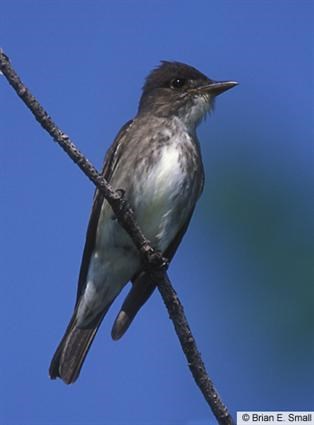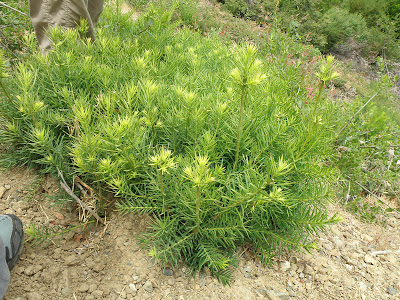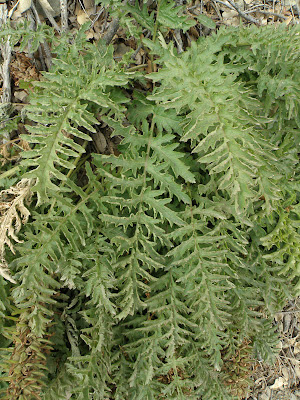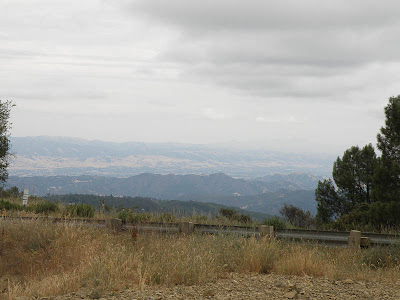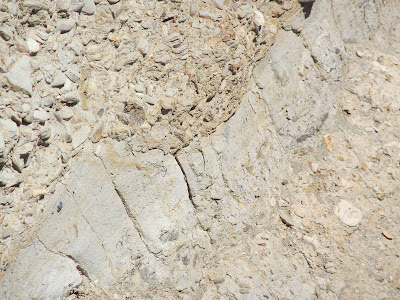 |
| Sedimentary, my dear Watson! |
No matter what your focus as a naturalist -- plants, birds, animals, whatever -- understanding the geology of the place where those things exist is, well, foundational.
I've wanted to want to like geology for a long time, and with recent encounters with local experts -- including Gary Griggs, distinguished professor and author of the Santa Cruz Sentinel column Our Ocean Backyard -- I'm coming pretty darn close to actually enjoying it!
On Saturday, I explored some coastal features along with my classmates in the California Naturalist Program, which is hosted in our area by the UC Santa Cruz Arboretum. Our able and witty leaders were Gerald (Jerry) Weber, geologic consultant, and Hilde Schwartz, senior lecturer at University of California, Santa Cruz.
 |
| Gerald Weber -- I believe that's the Año Nuevo Creek fault line behind his right shoulder. |
At Point Año Nuevo, Jerry told us how he discovered an active fault in the late 1960s when studying for his PhD -- and thus prevented PG&E from building a a nuclear power plant at Point Año Nuevo, where elephant seals come to breed each year. Other factors played into the decision but still, Jerry saved the day, in my book. PG&E had sent geologists to inspect the area earlier, and they totally missed the signs that Jerry had spotted that day. (As he told us with just a little professional glee.) I'll try to convey what Jerry told us those signs were as we stood near the place where Año Nuevo Creek flows to the sea.
For one thing, you can see uptilting strata that are being dragged up by the earth's movement along the fault.
 |
| Hilde Schwartz shows us the evidence for the Frijoles fault that Jerry discovered. |
 |
| Here are those rising strata in fluvial deposits that are only around 10K years old, indicating the fault is active. |
You can also see that the layers of rock - Purisima formation at this point - are offset on either side of this creek mouth area. (We could see these areas of offset but I don't have pictures.)
 |
| Grapic showing the Frijoles fault and the Año Nuevo Creek fault |
 |
| The same area, with classmates clustered around a fault line. |
And here you can see how the river backfilled its channel when sea levels changed - the fluvial deposits.
 |
| Jerry and Hilde show us where the Purisima formation meets the rubbly material that flowed in from the river |
For some other accounts of similar field trips with Jerry, here is a link to an NPR article and here is an account of a Sierra Club field trip.
The main point Jerry Weber wanted to leave us with was this: Here in the San Francisco Bay Area and adjacent Central Coast region, we think of ourselves living between fault lines which shift and cause earthquakes. Instead, Jerry wants us to realize that this whole area is a wide borderland between two tectonic plates, a mishmash of stressed and fractured rock squished between the Pacific and North American plates.
Oh dear! To repurpose the old Chinese curse - may you live in interesting places!



























.jpg)

.jpg)




















































































